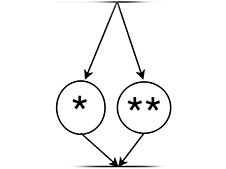The following article is the third in a series on design verification. Read Part II, “Design Verification: Process Considerations before Testing”.
Build and Package the Product
After considering the design and process parameters noted in the previous article, manufacture and package the product. The units should then undergo the maximum number of sterilization cycles or the maximum dose of sterilization, which represents worst-case conditions. Following sterilization, it is advisable to perform a visual inspection of the shipping cartons, unit cartons and inner packaging to ensure they have withstood the sterilization process and transport. After the sterilization is complete, a visual inspection is recommended, as follows:
- Ensure no major damage to the outer shipping carton by visual inspection.
- Ensure the inner unit cartons are intact and capable of being stored on a shelf.
- Ensure product labeling has remained adhered to the carton and that the information printed on all labeling is legible.
- If you have printed directions for use (DFU), ensure they are not torn or severely wrinkled, and that any staples they may contain are not rusted.
- Inspect the inner product’s packaging to ensure no channels, pinholes or other breaches to the sterile barrier are evident with visual inspection.
- Ensure the inner product labeling has remained adhered to its intended surface and that the printed information is legible.
If your supply chain calls for re-packing the product into distribution shippers following sterilization, then that should be done next. Remember to include an array of re-packing configurations to simulate the actual conditions of the distribution center (full and partially full shippers, etc.).
Climatic Conditioning
The next step is to expose the packaged product to climatic conditioning. This can take many forms, but standard practice would include the following climatic conditioning cycle, per ASTM F2825 – 10 (2015) (see Table 1).
| Step | Temperature | RH | Time (hour) |
| 1 | Ambient | Ambient | 6 |
| 2 | -29°C ±2 | Uncontrolled | 24 |
| 3 | Ambient | Ambient | 12 |
| 4 | 38°C ±2 | 24 | |
| 5 | 60°C ±2 | 6 | |
| 6 | Ambient | Ambient | 6 |
| Table 1 | |||
Conduct another visual inspection at this point, if desired, in order to ensure traceability of any defects to the climatic conditioning and to avoid confounding with further testing.
Distribution Simulation
In order to simulate the distribution of product from the distribution center to its intended use point, the packaged and sterilized product will be subject to an appropriate distribution test standard, such as ASTM D4169 or ISTA 2A Series or ISTA 3 Series, which are the primary test standards used for distribution simulation.1 After the simulated distribution is complete, another visual inspection is recommended, as defined following product sterilization above.
Read Part I of this series, “Design Verification: Ensure Product Protection throughout the Supply Chain”Stability Testing (Accelerated Aging and Real Time Aging)
Divide the packaged product among the aging groups as dictated in the test protocol. For example, if we desire a two-year shelf life, then depending on the risk tolerance of the company, best practice would be to have product in the following categories (We suggest the additional month in each group to satisfy Japanese test requirements):
- 25 month accelerated aging
- 25 month real time aging
- 13 month accelerated aging
- 13 month real time aging
- Un-aged product
Each group must contain a statistically significant sample size, as previously discussed.
The un-aged product can proceed to seal strength, seal integrity and product functional testing without further delay.
Place the 13- and 25-month accelerated aging units into oven(s) according to Table 2. This table defines the accelerated aging time (in days) for specific shelf life periods based on the Arrhenius equation (Q10 theory), the assumption of ambient storage condition at 25°C (77°F), and the shelf life requirements of Japan to add one month of additional aging.
| Accelerated Aging Temperature | Desired Shelf Life and Accelerated Aging Duration (months) | |||||||
| °C | °F | 7 | 13 | 19 | 25 | 37 | 49 | 61 |
| 40° | 104° | 75 | 140 | 204 | 269 | 398 | 527 | 656 |
| 50° | 122° | 38 | 70 | 102 | 135 | 199 | 264 | 328 |
| 60° | 140° | 19 | 35 | 51 | 67 | 100 | 132 | 164 |
| Table 2. Desired shelf life in days computed as (365/12)* X months; final result rounded up to the nearest whole day. | ||||||||
When the accelerated aging time is up, test the aged product for seal strength, seal integrity and product function. This testing should include the visual inspections described previously, as well as the following tests:
- Package Integrity Tests
- Ensure the sterile package is free of channels, pinholes and all other sterile barrier breaches under 10X magnification, following dye penetration testing.
- Seals must be continuous and uninterrupted.
- Peel Testing
- Pouch seals tensile strength must meet minimum acceptance criteria as established in the product specification. (If the data are variable in nature (i.e., numeric rather than pass/fail), then a normality test is required prior to calculating process capability.)
- Simulated Pouch Opening
- Open the pouch approximately half-way down. Visually inspect the opened seal area to ensure there is no delamination of the two pouch layers or fiber tears.
- The pouch should open steadily and easily.
- Product Inspection
- The product must not be broken or damaged under visual inspection.
- The product should be easy to remove from its packaging and must remain secured in its packaging during the DV testing.
- Product Functional
- The product must meet all acceptance criteria as noted in the product specification.







